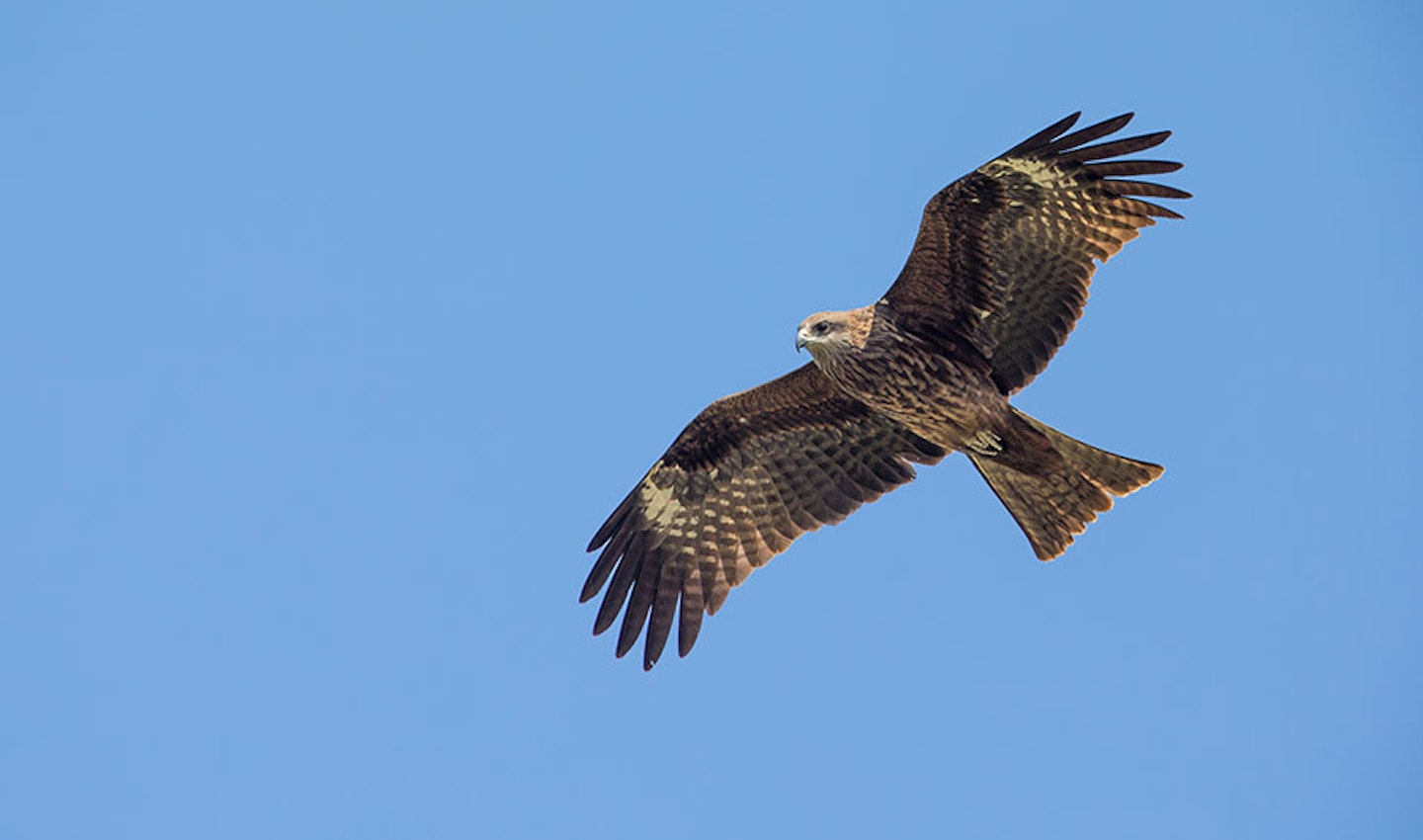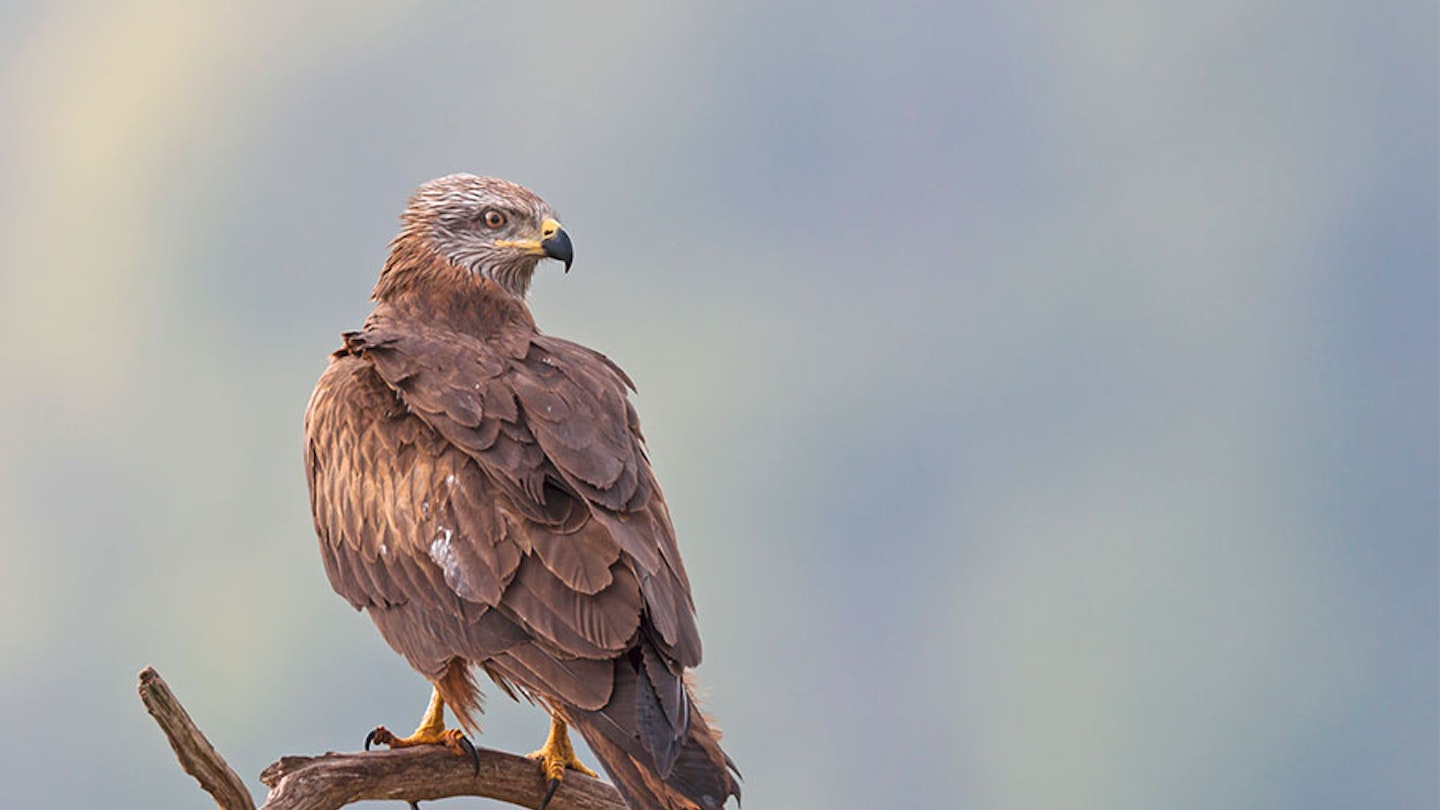Could Black Kites become a regular sighting in the UK and ultimately breed here? David Tomlinson thinks so…
Thanks to the most successful raptor reintroduction project in the world, the Red Kite has become a familiar bird for many of us. I live in Suffolk, where these handsome birds have yet to establish themselves, though they are sure to do so soon, as the number of breeding pairs in nearby Cambridgeshire and Northamptonshire continues to increase.
Though they may not breed locally, I see them regularly in the county, and every year I get an increasing number of records from my patch. The latter is the immediate vicinity of my home: a paddock that I manage for Barn Owls and Tree Sparrows, surrounded by arable fields producing onions, potatoes, barley and maize. It hardly looks the most promising of bird habitats, but in a good year I have recorded more than 100 species, while the accumulative total for the 14 years I have lived here is 136
There have been a few goodies over the years, including Wood Sandpiper and Stone-curlew, Red-backed Shrike and Wryneck. Raptors range from Marsh Harrier to Merlin and Goshawk (I do live in the Brecks), but I’m still waiting for my first Honey Buzzard.
However, one of the great attractions of birdwatching is that the unexpected is always a possibility. On 19 April, a bright sunny day with a south-easterly wind, I was involved in a photo session in my field with professional photographer, Sarah Farnsworth. Sarah was busy taking photographs, when I noticed a large raptor, soaring low over the lime trees that line my drive
A glance suggested that it was a Red Kite, always a good sighting here and one to be enjoyed. I swung my Leica Noctovids on to it, as much to enjoy watching it as to identify it, when I realised that it wasn’t a Red Kite at all, but its close cousin, a Black Kite. I can claim some experience with Black Kites, as I have seen thousands of them.
I’ve watched them streaming over the Straits of Gibraltar in the early spring, when they come in flocks hundreds strong. I’ve watched them on their breeding grounds in countries like Spain, France and Switzerland, where they are widespread and often common, and I’ve also observed them in extraordinary numbers on the rubbish tips of Delhi – how many was difficult to count, but my estimate was of thousands rather than just hundreds of birds
Similar in size and appearance to a Red Kite, the Black is a less elegant bird. Its tail, though forked, lacks the deep cleft of the former, while its wings aren’t so long, so they appear proportionately broader and less angular. The colour is a giveaway, for though this kite isn’t as black as a crow, it is dark brown, and lacks the colour and contrast of the Red. Incidentally, the French, the Spanish and the Germans all call it the Black Kite: Milan Noir, Milano Negro and Schwarzer Milan respectively

Sarah was shooting with a 200mm lens, but fortunately it gave sufficient magnification for her to capture a great series of images of the bird as it soared over our heads, before thermalling away to the north, and Norfolk, in company with a Buzzard. It’s always good to capture photographs of birds like this, as county recorders are far more likely to accept records of individuals that have been photographed. (Some years ago I saw a Black Kite at Wrotham in Kent, but I didn’t submit the record as I didn’t have binoculars or a camera, and suspected that doubts would be cast on my sighting).
I was well aware that Black Kites are rare birds in the UK, though an increasing number of records in recent years has downgraded them from being a true rarity, with sightings considered by the British Birds Rarities Committee, to just a scarce migrant. In Suffolk, the first two records were in 1971, and there wasn’t another until 1979. There have now been more than 30 accepted records, almost all of which have been in the spring and on the coast. Inland records, like mine, remain extremely unusual.
I turned to the most recent Report on Scarce Migrant Birds in Britain, for 2015, published in British Birds in September 2017. Since 2010, there has been an average of 25 Black Kites recorded in the UK annually, most in the spring and very few in the late summer. Kent is arguably the best county to try and see one, but they do occasionally reach Scotland, such as the bird on mainland Shetland in April 2015. The report notes that the “small but significant increase in spring overshoots reaching Britain [the average number of records was 17 a year from 200-09] reflects a marked growth in the Iberian and French populations since the 1980s.”

It’s a reminder that Black Kites are an exception among European raptors, for not only are they thriving, but they are spreading farther north, helped, no doubt, by our warming climate. They are strongly migratory, with the first birds arriving back in southern Europe in late February and early March. At this time, it is quite usual to see big flocks in Andalucía, often feeding together, on the ground. They will be around for a day or two, before moving on north to their breeding grounds. They are quite different in their habitat requirements from the more generalist Red Kite; for in northern Europe they favour territories close to water, where they like to scavenge dead fish.
Once they have finished breeding, they seldom linger long. The first departing individuals pass over Gibraltar in late July, and the peak passage is during the middle 10 days of August. A few are seen in September, but by October only the odd straggler occurs. As migrants they penetrate deep intro tropical Africa, mixing with the local (and closely related) Yellow-billed Kites.
In France, where they are widespread and relatively common as far north as the Loire, there are estimated to be between 22,500 and 26,300 pairs, making up a quarter of the European population. The French population is increasing fast: when the EBCC Atlas of European Breeding Birds was published in 1997, the number was estimated at fewer than 7,000 pairs, while the first French breeding bird atlas (1976) suggested just 1,000 couples.
With such a growing population in France and an increasing number of overshooting migrants reaching the UK, this has to be one bird that will follow the examples of other southern migrants, such as Black-winged Stilt and Bee-eater, and start nesting here. However, so far there have been no records of prospecting pairs, not even lingering individuals.
As most twitchers will confirm, this isn’t an easy bird to see in the UK. Most sightings are of passing migrants, seen briefly and rarely pausing. There was a record of one from Kent on the day I saw my bird. It may well have been the same individual. It would be fascinating to know what happened to it.
Did it suddenly realise that it had flown too far and head back to the continent? My suspicion is that it might have done.
Pic: David Chapman/Alamy
Pic: David Chapman/Alamy
We certainly have sufficient habitat here in southern England to support breeding Black Kites. Lowland reservoirs like Bough Beech in Kent, Abberton in Essex and Rutland Water could all provide what appears to be perfect habitat. Competition with existing populations of Red Kites is unlikely to be a problem. The two species have always bred side-by-side in Spain’s Coto Doñana National Park with little, if any, conflict. Like Red Kites, Blacks are semi-colonial, happiest living and nesting in company with others of their kind.
There can be no question of introducing Black Kites to the UK: they have never nested here. However, if you wanted to put money on a likely colonist, then this handsome, adaptable bird does seem a pretty good bet. Hot summers, like the one we have just experienced, seem likely to increase the odds of nesting taking place.
However, it should be remembered that like most raptors, Black Kites are reluctant to cross broad stretches of water, making the English Channel a major deterrent. If it wasn’t for the Channel, I’m sure that these birds would already be nesting here.
BLACK KITE FACTFILE
Scientific name: Milvus migrans
Length: 48-58cm
Wingspan: 130-155cm
UK numbers: Passage migrant
Habitat: Breeds in forests near lakes, rivers or wetlands
Diet: Fish, offal, refuse.
David’s Kit Box
Leica Noctivid 10x42 binoculars RRP: £2,350
Website
